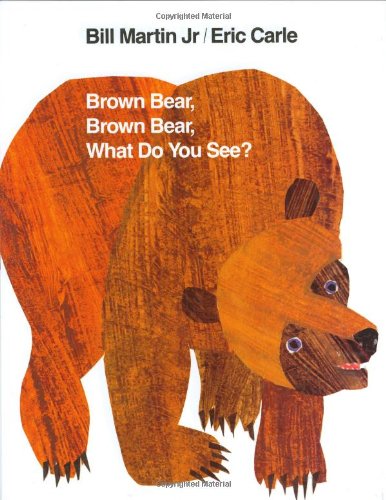 So many of you know this classic picture book for young children by Bill Martin and Eric Carle. It’s one of those board books that nearly everyone has read, and some have dog-eared worn copies.
So many of you know this classic picture book for young children by Bill Martin and Eric Carle. It’s one of those board books that nearly everyone has read, and some have dog-eared worn copies.
When the Brown Bear is asked what does he see, he replies: “I see a red bird looking at me.” And in turn when the red bird is asked the same question, she responds: “I see a yellow duck looking at me.” And so on to blue horse and other animals.
I thought of this title when thinking of the opening verse of Parshat Re’eh – “See! I have set before you a blessing and a curse.” I was thinking: What do you see when you see a blessing and a curse? And the phrase “What do you see?” led me to the Brown Bear book.
What do the animals see? The operative word here is “looking at me.”
Our eyes see everything. They are the most marvelous cameras, the best lenses, they take in so much. In one glance they take in massive gigabytes of data. But what do we really see? What grabs our attention? What makes us focus? That which looks back at us.
There’s a biblical expression regarding the holiday pilgrimage which says you went “to see and be seen.” The most meaningful form of seeing is when it goes both ways. Think of how a loving couple looks each other in the eyes. Or think of the expression: “I’m seeing this person.”
This doesn’t only have to be about people. Think of scanning pages of study texts you’re totally not interested in if not for class vs. savoring rich and meaningful words that jump out at your from the page, figuratively looking at you as you look at them.
We’re now entering the month of Elul, the month of preparation before Rosh Hashanah. The 4 Hebrew letters of Elul stand for a classic verse from Song of Songs: “Ani L’Dodi v’Dodi Li” (I am to my beloved and my beloved is to me) which fits this theme of I see – what looks at me.
Most things in life we look AT. But those special things/people in life that look back at us – that’s real seeing, that takes seeing to a whole new level.
And perhaps this can be a different way of looking at this verse: “See!” see it in a way that you are not merely looking at it, but you see it as it sees you. You don’t only see it, but you establish a connection.
This reminds me of a Lchaim memory with the Rebbe. In between the talks of the Rebbe’s farbrengen gathering the crowd would sing Chassidic melodies. During that singing time people would raise a small cup of wine to the Rebbe (usually a shotglass size) and wait for the Rebbe to see them, and recognize them with a L’chaim response. There were thousands of people in the large cavernous room, people stood packed, shoulder to shoulder, yet the Rebbe made that eye contact, that recognition and response to each one. Here’s one thing that I felt: You always knew when the Rebbe responded to you. You never felt confused with someone else. Even at significant distance when the Rebbe nodded to your raised cup – you just knew it. It had that special quality of “looking at me.”
